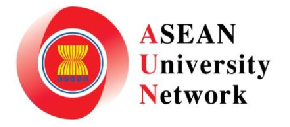
Abstract
Scabies is one of the most neglected tropical skin diseases in Indonesia. It is usually found in overcrowded communities with poor hygiene. The gold standard for scabies treatment is the whole-body topical application of 5% permethrin cream. However, the treatment causes inconvenience and stickiness for a prolonged period. The modification of topical treatment by applying only to the lesion yielded results similar with whole-body topical application. We consider using this mode of treatment to control the disease in a boarding school. The study was conducted from June to August 2019. All students were examined by dermatologists, and individuals who were diagnosed with scabies were treated using 5% permethrin for 12 h before wash-off (week 0) applied on the lesion only and reapplied a week after. The evaluation was conducted on weeks 4 and 8 by observing scabies lesions. Local health cadres were also trained, and environmental interventions were also performed. A total of 75 participants were analyzed. Most lesions were found on predilection sites such as finger web spaces of the left (57.3%) and right (58.7%) hands, gluteal region (60%), and penis (40%). The cure rate (CR) was 83%–100% of the lesions in week 4, which increased to 95%–100% in week 8. The CR on week 8 compared with baseline was 94.7% (p < 0.001). A total of 23 cadres were trained, and from post-test, 84% of the cadres showed good knowledge of scabies management. This novel application of 5% permethrin cream on the lesion only is an effective alternative to the conventional whole-body topical application.
References
Abdel-Raheem, T. A., Méabed, E. M., Nasef, G. A., Abdel Wahed, W. Y., & Rohaim, R. M. (2016). Efficacy, acceptability and cost effectiveness of four therapeutic agents for treatment of scabies. Journal of Dermatological Treatment, 27(5), 473-479. https://doi.org/10.3109/09546634.2016.1151855
Aussy, A., Houivet, E., Hébert, V., Colas‐Cailleux, H., Laaengh, N., Richard, C., & Benichou, J. (2019). Risk factors for treatment failure in scabies: a cohort study. British Journal of Dermatology, 180(4), 888-893. https://doi.org/10.1111/bjd.17348
Bassi, A., D'Erme, A. M., & Gola, M. (2011). Erythema multiforme-like irritant contact dermatitis after application of an antiscabies treatment. International Journal of Immunopathology and Pharmacology, 24(2),545-547. https://doi.org/10.1177%2F039463201102400232
Chandler, D. J., & Fuller, L. C. (2019). A review of scabies: an infestation more than skin deep. Dermatology, 235(2), 79-90. https://doi.org/10.1159/000495290
Chosidow, O. (2006). Scabies. New England Journal of Medicine, 354(16),1718-1727. https://www.nejm.org/doi/full/10.1056/nejmcp052784
De Sainte Marie, B., Mallet, S., Gaudy-Marqueste, C., Baumstarck, K., Bentaleb, N., Loundou, A., Hesse, S., Monestier, S., Grob, J. J., & Richard, M. A. (2016). Therapeutic failure in scabies: an observational study. Annales de Dermatologie et de Vénéréologie, 143(1), 9-15.
Dogra, S., & Kumbar, B. (2003). Epidemiology of skin diseases in school children: a study from northern India. Pediatric Dermatology, 20(6), 470-473. https://doi.org/10.1111/j.1525-1470.2003.20602.x
Ejigu, K., Haji, Y., Toma, A., & Tadesse, B. T. (2019). Factors associated with scabies outbreaks in primary schools in Ethiopia: a case–control study. Research and Reports in Tropical Medicine, 10, 119-127. https://www.ncbi.nlm.nih.gov/pmc/articles/PMC6717729/
Ebrahim, K. C., Alves, J. B., Tomé, L. D. A., Moraes, C. F. D., Gaspar, A. D., Franck, K. F., ... & Sidney, L. F. D. O. (2016). Norwegian scabies-rare case of atypical manifestation. Anais Brasileiros de Dermatologia, 91(6), 826-828. https://www.scielo.br/j/abd/a/CCfbR5THgFKX34YHb5NgxNh/abstract/?lang=en
Engelman, D., Fuller, L. C., & Steer, A. C. (2018). Consensus criteria for the diagnosis of scabies: a Delphi study of international experts. PLoS Neglected Tropical Diseases, 12(5), e0006549. https://doi.org/10.1371/journal.pntd.0006549
Hay, R. J., Steer, A. C., Engelman, D., & Walton, S. (2012). Scabies in the developing world—its prevalence, complications, and management. Clinical Microbiology and Infection, 18(4), 313-323. https://doi.org/10.1111/j.1469-0691.2012.03798.x
Kouotou, E. A., Nansseu, J. R. N., Sieleunou, I., Defo, D., Bissek, A. C. Z. K., & Ndam, E. C. N. (2015). Features of human scabies in resource-limited settings: the Cameroon case. BMC Dermatology, 15(1), 12. https://doi.org/10.1186/s12895-015-0031-0
Karimkhani, C., Colombara, D. V., Drucker, A. M., Norton, S. A., Hay, R., Engelman, D., & Dellavalle, R. P. (2017). The global burden of scabies: a cross-sectional analysis from the Global Burden of Disease Study 2015. The Lancet Infectious Diseases, 17(12), 1247-1254. https://doi.org/10.1016/S1473-3099(17)30483-8
Mason, D. S., Marks, M., Sokana, O., Solomon, A. W., Mabey, D. C., Romani, L., ... & Engelman, D. (2016). The prevalence of scabies and impetigo in the Solomon Islands: a population-based survey. PLoS Neglected Tropical Diseases, 10(6), e0004803. https://doi.org/10.1371/journal.pntd.0004803
Menaldi S. L., Marissa, M., & Surya, D. (2021). Impact of scabies on Indonesian public boarding school student’s quality of life: a mixed-method analyses. Journal of General-Procedural Dermatology and Venereology Indonesia, 5(2), 74-78. http://dx.doi.org/10.19100/jdvi.v5i2.264
Muzakir. (2008). Faktor yang berhubungan dengan penyakit scabies di pesantren di Kabupaten Aceh Besar tahun 2007 [thesis]. Medan: Universitas Sumatera Utara; 2008.
Osti, M. H., Sokana, O., Phelan, S., Marks, M., Whitfeld, M. J., Gorae, C., ... & Engelman, D. (2019). Prevalence of scabies and impetigo in the Solomon Islands: a school survey. BMC Infectious Diseases, 19(1), 803. https://doi.org/10.1186/s12879-019-4382-8
Pruksachatkunakorn, C., Wongthanee, A., & Kasiwat, V. (2003). Scabies in Thai orphanages. Pediatrics International, 45(6), 719-723. https://doi.org/10.1111/j.1442-200X.2003.01811.x
Pérez-Crespo, M., Ramos-Rincón, J. M., Albares-Tendero, M. P., & Betlloch-Mas, I. (2016). Dermatoses in Latin American immigrant children seen in a university hospital of Spain. Journal of Immigrant and Minority Health, 18(1), 16-20.
Ratnasari, A. F., & Sungkar, S. (2014). The prevalence of scabies and its related factors in pesantren X, East Jakarta. eJournal Kedokteran Indonesia, 2(1), 7-12. https://doi.org/10.23886/ejki.2.3177
Roos, T. C., Roos, S., Merk, H. F., & Bickers, D. R. (2001). Pharmacotherapy of ectoparasitic infections. Drugs, 61(8), 1067-1088. https://doi.org/10.2165/00003495-200161080-00004
Sungkar, S. (2016). Skabies. Jakarta, Indonesia: Badan Penerbit FKUI.
Sahala, M. A., Soedarman, S., Rizky, L. A., Natanegara, A. P., Advani, M. S., & Sungkar, S. (2016). The prevalence of skin diseases and its association with hygiene behavior and level of education in a Pesantren, Jakarta Selatan 2013. eJournal Kedokteran Indonesia, 4(2),119-124. https://doi.org/10.23886/ejki.4.6288.119-24
Sharma, R., & Singal, A. (2011). Topical permethrin and oral ivermectin in the management of scabies: a prospective, randomized, double blind, controlled study. Indian Journal of Dermatology, Venereology, and Leprology, 77(5), 581-586. https://doi.org/10.4103/0378-6323.84063
Sungkar, S., Agustin, T., Menaldi, S. L., Fuady, A., Herqutanto, H., Angkasa, H., & Zulkarnain, H. (2014). Effectiveness of permethrin standard and modified methods in scabies treatment. Medical Journal of Indonesia, 23(2), 93-98. https://doi.org/10.13181/mji.v23i2.594
Sunderkötter, C., Aebischer, A., Neufeld, M., Löser, C., Kreuter, A., Bialek, R., Hamm, H., & Feldemeier, H. (2019). Increase of scabies in Germany and development of resistant mites? Evidence and consequences. Journal der Deutschen Dermatologischen Gesellschaft, 17(1), 15-23. https://doi.org/10.1111/ddg.13706
Syauqi, M. I. (2014). Berkah Penyakit Kudis di Pesantren. Warta Times. Available from: http://www.wartatimes.com/pendidikan/berkah-penyakit-kudis-di-pesantren
Thadanipon, K., Anothaisintawee, T., Rattanasiri, S., Thakkinstian, A., & Attia, J. (2019). Efficacy and safety of antiscabietic agents: a systematic review and network meta-analysis of randomized controlled trials. Journal of the American Academy of Dermatology, 80(5), 1435-1444. https://doi.org/10.1016/j.jaad.2019.01.004
Wijayanti, L., & Ainiyah, N. (2019). The effect of the skin personal hygiene modules as health education media against knowledge in prevention of skabies. Nurse and Health, 8(1), 1-7. http://repository.unusa.ac.id/6400/
Zayyid, M. M., Saadah, R. S., Adil, A. R., Rohela, M., & Jamaiah, I. (2010). Prevalence of scabies and head lice among children in a welfare home in Pulau Pinang, Malaysia. Tropical Biomedicine, 27(3), 442-446. http://www.ncbi.nlm.nih.gov/pubmed/21399584
Recommended Citation
Sungkar, Saleha; Wahdini, Sri; Kekalih, Aria; Rilanda, Risa; Angkasa, Hansen; and Widaty, Sandra
(2022).
Control of Scabies in a Boarding School Using 5% Permethrin Applied on Lesion Only.
ASEAN Journal of Community Engagement, 6(1), 76-97.
Available at: https://doi.org/10.7454/ajce.v6i1.1083







